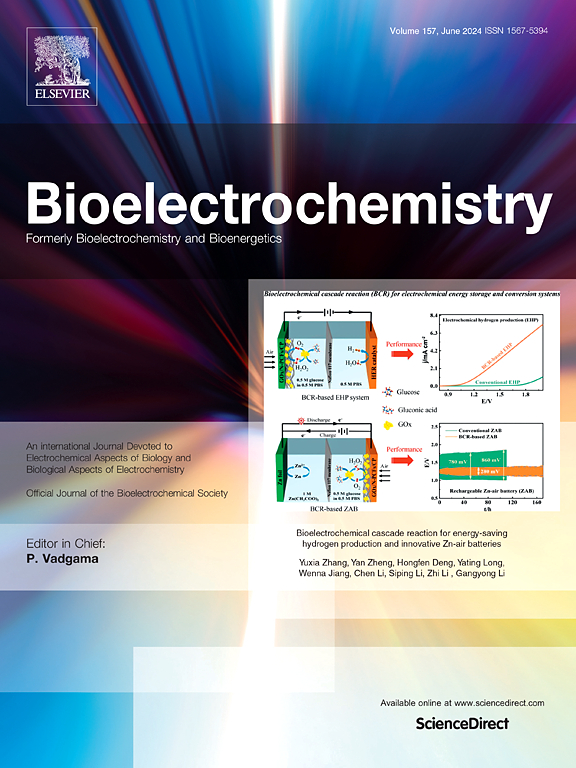Regulation of behavioral responses to single prolonged stress in male and female rats: Role of PACAP
IF 3.6
2区 医学
Q1 NEUROSCIENCES
引用次数: 0
Abstract
Post-Traumatic Stress Disorder (PTSD) is a debilitating condition in which a traumatic experience triggers symptoms related to re-experiencing, avoidance, arousal, and mood dysregulation. PTSD negatively impacts 6 % of people during their lifetime, with women being disproportionally affected and exhibiting different, more severe symptoms than men. Despite this widespread impact, the molecular mechanisms underlying PTSD and its sex differences remain poorly understood. Pituitary Adenylate Cyclase-Activating Polypeptide (PACAP) is a neuropeptide which participates in fine-tuning circuitry throughout the brain and has been associated with PTSD in humans, especially in women. Here, we use Single Prolonged Stress (SPS), an animal model of PTSD, to explore the roles of PACAP and sex in PTSD-like behaviors. Specifically, a PACAP agonist or antagonist was infused into the infralimbic (IL) prefrontal cortex, a region key to regulating fear- and anxiety-related behaviors, prior to SPS in male and female rats. Rats were then tested in open field/novel object, elevated plus maze, and social interaction. Utilizing a behavioral indexing method, we were able to uncover SPS effects in PTSD-related behavioral domains that were differentially impacted by PACAP manipulations in males and females. While both sexes exhibited increased threat avoidance and decreased threat assessment following SPS, females increased sociability while males decreased sociability. Males also appeared to be protected by IL PACAP antagonism while female SPS phenotypes were exacerbated by IL PACAP agonism. Furthermore, RNAscope revealed that PACAP in the prefrontal cortex responds differently to SPS in males and females. Together, these findings suggest complex relationships between SPS, sex, and IL PACAP which may have important implications for treating PTSD in men and women.
单次长时间应激对雌雄大鼠行为反应的调节:PACAP的作用
创伤后应激障碍(PTSD)是一种使人衰弱的疾病,在这种疾病中,创伤经历会引发与重新体验、逃避、觉醒和情绪失调相关的症状。创伤后应激障碍对6%的人产生负面影响,女性受到的影响不成比例,表现出不同的、比男性更严重的症状。尽管有这种广泛的影响,但PTSD的分子机制及其性别差异仍然知之甚少。垂体腺苷酸环化酶激活多肽(PACAP)是一种参与整个大脑微调回路的神经肽,与人类,特别是女性的创伤后应激障碍有关。本研究利用创伤后应激障碍(PTSD)动物模型单一延长应激(SPS),探讨PACAP和性别在PTSD样行为中的作用。具体来说,在雄性和雌性大鼠SPS之前,将PACAP激动剂或拮抗剂注入边缘下(IL)前额皮质,这是调节恐惧和焦虑相关行为的关键区域。然后对大鼠进行开阔场地/新奇物体、高架+迷宫和社会互动测试。利用行为索引方法,我们能够发现男性和女性在创伤后应激相关行为领域中受到PACAP操作差异影响的SPS效应。在SPS之后,两性都表现出了更高的威胁规避能力和更低的威胁评估能力,但女性的社交能力增强了,而男性的社交能力减弱了。IL - PACAP拮抗剂对雄性也有保护作用,而IL - PACAP拮抗剂则加剧了雌性SPS表型。此外,RNAscope显示,男性和女性前额叶皮层的PACAP对SPS的反应不同。总之,这些发现提示了SPS、性别和IL - PACAP之间的复杂关系,这可能对治疗男性和女性创伤后应激障碍具有重要意义。
本文章由计算机程序翻译,如有差异,请以英文原文为准。
求助全文
约1分钟内获得全文
求助全文
来源期刊

Neurobiology of Stress
Biochemistry, Genetics and Molecular Biology-Biochemistry
CiteScore
9.40
自引率
4.00%
发文量
74
审稿时长
48 days
期刊介绍:
Neurobiology of Stress is a multidisciplinary journal for the publication of original research and review articles on basic, translational and clinical research into stress and related disorders. It will focus on the impact of stress on the brain from cellular to behavioral functions and stress-related neuropsychiatric disorders (such as depression, trauma and anxiety). The translation of basic research findings into real-world applications will be a key aim of the journal.
Basic, translational and clinical research on the following topics as they relate to stress will be covered:
Molecular substrates and cell signaling,
Genetics and epigenetics,
Stress circuitry,
Structural and physiological plasticity,
Developmental Aspects,
Laboratory models of stress,
Neuroinflammation and pathology,
Memory and Cognition,
Motivational Processes,
Fear and Anxiety,
Stress-related neuropsychiatric disorders (including depression, PTSD, substance abuse),
Neuropsychopharmacology.
 求助内容:
求助内容: 应助结果提醒方式:
应助结果提醒方式:


